Matrix Notation:
Two ways to denote m × n matrix A:
In terms of the entries of A:
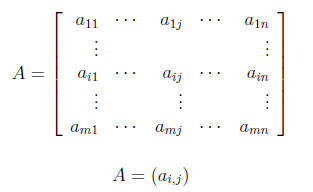
(A)i,j is the (i, j)-entry of matrix A
In terms of the columns of A:

Main diagonal entries:_____
Zero matrix :

Matrix addition : Let A, B be matrices of the same size

Scalar multiple :

THEOREM 1
Let A, B, and C be matrices of the same size, and let r and s be scalars.
Then

Matrix Multiplication
Row-Column Rule for Computing AB: Let A is m × n and B is n × p
matrices
and let (AB)ij denote the entry in the ith row and jth column of AB. Then
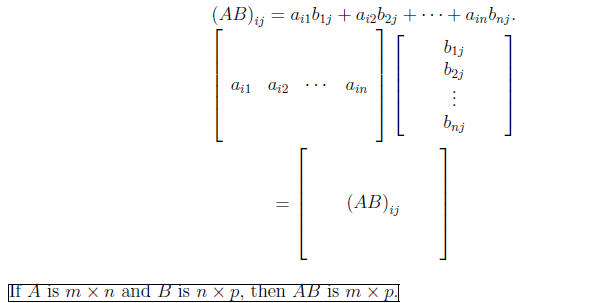
EXAMPLE

Compute AB, if it is defined.
Solution : Since A is 2 × 3 and B is 3 × 2, then AB is defined and AB is
____×____
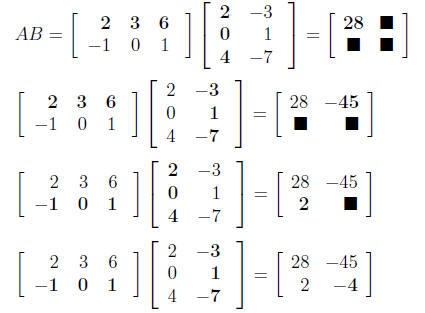
So AB =

When A and B have small sizes, the Row-Column Rule is more efficient when
working by
hand.
EXAMPLE: If A is 4 × 3 and B is 3 × 2, then what are the sizes of AB
and BA?
Solution :
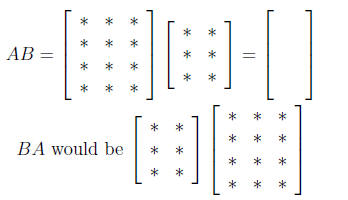
which is _______
THEOREM 2
Let A be m × n and let B and C have sizes for which the indicated sums and
products
are defined.
WARNINGS
Properties above are analogous to properties of real numbers . But NOT ALL
real
number properties correspond to matrix properties.
1. It is not the case that AB always equal BA.
2. Even if AB = AC, then B may not equal C.
3. It is possible for AB = 0 even if A ≠ 0 and B
≠ 0.
Powers of A

EXAMPLE:

If A is m × n, the transpose of A is the n × m matrix, denoted by AT , whose
columns
are formed from the corresponding rows of A.
EXAMPLE:

EXAMPLE:
Let Compute AB, (AB)T , ATBT
and BTAT
Compute AB, (AB)T , ATBT
and BTAT
Solution:
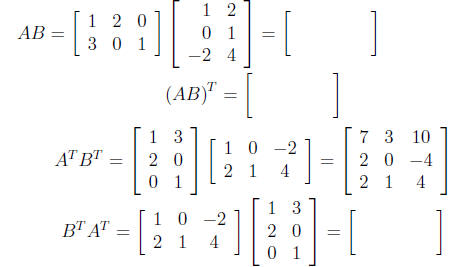
THEOREM 3
Let A and B denote matrices whose sizes are appropriate for the following
sums and products .
a.(AT)T= A (I.e., the transpose of AT is A)
b. (A + B)T = AT + BT
c. For any scalar r, (rA)T = rAT
d. (AB)T = BTAT (I.e. the transpose of a product of matrices equals the
product of their transposes in reverse order. )
EXAMPLE: Prove that (ABC)T = _____.
Solution: By Theorem 3d,
